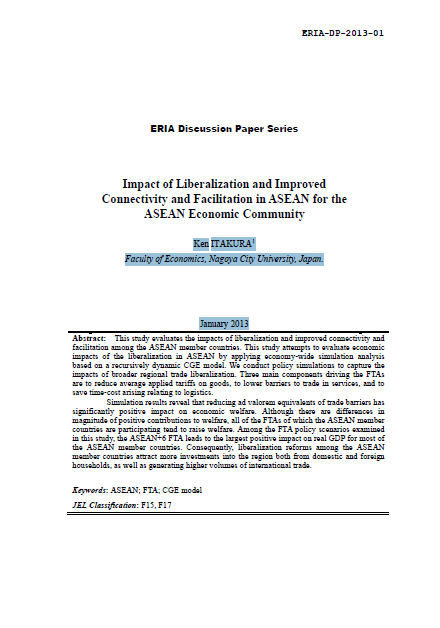
Introduction:
"This study evaluates the impacts of liberalization and improved connectivity and facilitation among the ASEAN member countries. The subject of such wider liberalization encompasses reforms that have been implemented or will be accomplished in the near future in the ASEAN region. This study attempts to evaluate economic impacts of the liberalization undertaken in the region towards freer trading area by applying economy-wide simulation analysis. Impacts of liberalization of trade in goods and services would be arising from lowering barriers to trade; for example, reducing import tariffs, ameliorating custom procedures, removing potential barriers to trade in services as well as improving logistics. Collecting information and estimates of tariffs and trade costs associating with liberalization potential is essential part of this study in order to conduct quantitative evaluation. We relied on variety of database and estimates from international organizations, national research institutions, and researchers in this field of impact study.
The liberalization reforms will have economy-wide effects covering all the ASEAN member countries for sectors ranging from agriculture, resources, manufacturing, and service industries. To capture the impacts of such broad regional trade liberalization, it would be desirable to use a multi-country, multi-sector applied economic model of international trade, capable of handling changes in tariffs and trade costs both in the past and the future for welfare evaluation.
In the next section, we begin describing database and estimates used in this study and outline the recursively dynamic Computable General Equilibrium model in Section 3. Experimental design for our simulation exercises is listed in Section 4, Section 5 reports simulation results, and a summary follows."
Share: